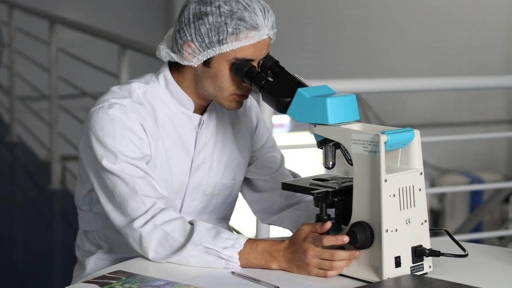Researchers at the University of Cambridge have developed a new portable device for earlier detection of abnormalities of heart valves, also known as valvular heart disease (VHD). The device, equipped with six sensors, is no bigger than a beer mat, very user-friendly and could potentially provide an alternative to the traditional stethoscope.
Thanks to its larger, flexible sensing surface, the device is less dependent on precise placement on the chest and delivers clearer recordings than conventional stethoscopes. Moreover, it can be used over clothing, increasing comfort for patients, especially women, during routine check-ups or screening programmes. Moreover, in many countries, half of patients with severe VHD remain undiagnosed, and many do not seek medical attention until the disease is already advanced and causing significant complications.
Machine learning algorithm
The recorded heart sounds are stored on the device and can be analysed to detect signs of heart valve disease. In addition, the researchers are developing a machine learning algorithm that can automatically detect indications of such conditions. Heart valve disease is considered the next ‘cardiac epidemic’, with a worse prognosis than many cancers.
Traditionally, VHD is diagnosed via auscultation with a stethoscope. However, this examination is only performed in just over a third (38%) of patients who visit their GP with symptoms of VHD. Symptoms of VHD can easily be confused with respiratory disease, which means that many patients are not examined in time.
ECG is the gold standard
The gold standard for diagnosing heart valve disease is an ECG, but this examination can only be performed in a hospital, often with long waiting times. To reduce these waiting times and diagnose VHD earlier, the researchers set out to find an alternative that is both reliable and user-friendly. And with success, it seems. The handy and compact device can be used by any healthcare professional to record accurate heart sounds, even over clothing. Unlike traditional stethoscopes, which have only one sensor, this device has six sensors, making it easier to take accurate measurements.
This is reminiscent of the Keikku we wrote about at the end of last year. That is a ‘digital’ smart stethoscope designed to listen to sounds produced in and by the body in a different way. In this way, so much more can be learned about a patient's state of health than what has been possible with a stethoscope in the past decades.
First tests
The handheld device now developed at Cambridge University uses materials that can transmit vibrations, so it can be used over clothing. The researchers tested the device on healthy participants with various body shapes and sizes and recorded their heart sounds. The next step is to test the device in a clinical setting on different patients, comparing the results with those of an echocardiogram.
In parallel with developing the device, the researchers have developed a machine learning algorithm that can use the recorded heart sounds to automatically detect signs of valve disease. Early tests of the algorithm suggest that it outperforms GPs in detecting heart valve disease. If the tests are successful, and the device, which otherwise has no name yet, is approved, it could become an affordable and scalable solution for screening heart health, especially in areas with limited medical resources. In addition, the developers also see an application as a tool to triage patients waiting for an echocardiogram.
Last year, Eko Health and the Mayo Clinic presented an AI-controlled stethoscope they developed that can detect low ejection fraction (EF), a key indicator of heart failure, within 15 seconds. This device, which already received FDA approval several years ago, had been trained with data from more than 100,000 ECGs and echocardiograms.









